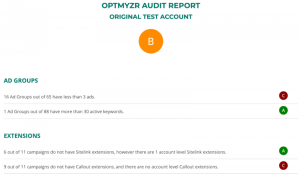Explainer videos are fantastic communication tools for brands—if they tell the right story. (To find out if you have a good explainer story, read this.) That’s why an explainer video script is so important.
Even if you have world-class visuals, a weak script will sabotage your explainer, making it boring at best and confusing at worst. (There’s a reason a beautiful cover can’t save a bad book.) Sadly, many brands underestimate just how crucial this document is.
Your Explainer Video Script Matters
Explainer videos work well for scientific reasons, specifically related to Allan Paivio’s Dual-Coding Theory. The idea is that audio and visual channels work separately in the brain, so when content is presented simultaneously by way of audio and visual channels—say, on-screen images and voice over—the information is processed faster and with greater ease.
If you want to learn more about how they work and why they work for brands, jump over to this post. Or watch this explainer video on explainer videos.
A strong story determines the success of your entire explainer video because it drives both the audio and visual components. That said, many brands struggle with writing an effective script.
A Good Explainer Video Script Is Tough
Explaining a complex or detailed concept is hard enough. When you have to distill that concept, tell an engaging story, show off your brand personality, and deliver a strong takeaway—all in an incredibly limited word count—it’s a freaking magic trick. This why we see so many, well, less-than-great explainer videos.
The problem largely comes down to a lack of knowledge. Luckily, we know what makes a good explainer video script—and what can make it a disaster. (We see you, crazy word count!)
If you need to tell a story from scratch or revamp your current explainer video script, follow our guide to spot the most common pitfalls and strengthen your story.
The Keys to a Good Explainer Video Script
There are two aspects of an explainer video script: the story itself and how you decide to tell that story. The story is the foundation of it all, so nailing that first is imperative. Here’s how to do it.
Tell a single story
All too often we see explainers that have convoluted messaging, meander all over the place, or wait until the very last second to get to the damn point. Sometimes it’s so distracting it actually does more damage than having no explainer at all. Do not make this mistake. A cohesive narrative should be your focus.
Your story will likely fall into one of two categories: problem-solution or process walkthrough. There are nuances to each, as subtle as they may be. Following these narrative formats will help you craft a strong explainer video script.
- Problem-Solution: This is the classic way to pose your company product or service as the hero that makes your audience’s life easier. Make the problem clear and relatable, then use the story arc to make a natural transition to the solution. Note: Don’t spend more time on the problem than the solution. You want to leave them fantasizing about your awesome product or service, not ruminating on the frustrating problem.
- Process Overview: This tactic may be used for a service overview or a product how-to. In this approach, there’s no problem. It’s a self-contained story. Outline your narrative in clear beats, moving from one point to the next cleanly and efficiently.
Your video may not perfectly fit into either category, which is OK. The real recipe for success with explainers is simple: Provide a basic setup and a payoff for your audience. Always remember:
- Be straightforward and confident. You want your audience to trust you from the start.
- Anticipate the viewer’s questions. Make sure they’re answered in the story.
Dumb it down (in a good way)
Reddit has a subreddit for just about anything, but one of the most intriguing ones is Explain Like I’m Five. The concept is simple: Break down an idea with the language—and likely the enthusiasm—you would use if your were explaining it to a 5-year-old. Even if your audience is highly educated, the goal of an explainer is to deliver information succinctly.
Keep your story as simple as possible, but don’t condescend. We like to think of an explainer video script as a children’s book for adults: interesting, engaging, and easy to digest. (Also, the shorter your video is, the more you show respect for your viewer’s time.)
A few tips that can help here:
- Try to write your story outline in five sentences. This exercise will help you distill your thinking.
- Use short, simple sentences. Write as though you’re speaking to a friend or family member. We tend to speak far more colloquially than we write, which is helpful when writing for voice over.
Inject emotion
You may want to make them laugh or tug on their heartstrings; either way, the more you elicit an emotional response, the more engaged your audience will be. Hook them from the start.
You don’t have to tell the greatest campfire ghost story of all time. What matters most is telling a good story. Use your tone, language, anecdotes, stats, or any other storytelling device to help you communicate an emotion. (Just make sure the emotion is appropriate for the subject.)
Effectively communicating your brand voice is also a huge factor here. Your audience wants to form an emotional bond with a human. Position yourself as a helpful and approachable friend. (Yes, even legal or technical explainers can still showcase some warmth or charm.)
Keep it personal
By making the narrative personally relevant, you’ll have a much easier time eliciting an emotional response from your viewer. This means you need to frame the topic as relatable to their lives.
Whenever possible, put the viewer in the driver’s seat. For example, instead of following the antics of an on-screen character, speak directly to the viewer.
Questions to Ask Yourself
- Why do I want to tell this story? Don’t make an explainer video for fun. Know your goal to help anchor your messaging and write an effective script.
- What’s my angle? In an explainer video, you’re either filling in an information gap or expanding your viewer’s knowledge. How are you making their life easier?
- Why will my audience care? Who are you speaking to, and what do they want? What are their pain points, and how are you solving them? This knowledge is necessary to help you tailor your message for them. (If you haven’t identified your audience, check out our guide to creating customer personas in under 60 minutes.)
- What value will this provide? How that comes across is up to you, but it should provide some worthwhile information.
- What should my audience take away from this? Your conclusion should have a lasting impact. If your explainer is strong up until a shrug of a closer, all your work will be for nothing. You shouldn’t end with an overtly sales-based message (it can unravel the work your explainer video just did), but there should be a definitive takeaway.
Once you have your story, be aware of how you’re presenting that story.
Keep it tight
Brevity is key when writing an explainer video script. The longer it is, the less impact it will have. Remember: Explainer videos are usually between 30 seconds and 3 minutes.
- Watch your word count. 130-150 words per minute is a comfortable pace.
- Run your read time. Read your script aloud, but don’t solely rely on that practice for time. Because you know the script, you’ll read faster than a properly paced voice over artist would. You can check your script’s reading time here.
Write for voice over
People who write outstanding blog posts or killer ebooks often forget that video is an entirely different beast. Writing for video sounds easy enough; that’s the trouble. Remember that there will be visuals and audio work at play here, so your writing has to complement yet drive both of those arenas.
Remember that there will be visuals and audio work at play here, so your writing has to complement yet drive both of those arenas.
This is especially important for voice over. The language you use needs to roll off the tongue, so beware of what you include.
- Avoid complicated words: Voice over artists are pros, but that doesn’t mean we haven’t seen a cut sabotaged by an awkward pronunciation or clunky word that interrupts the story flow. If you can say it in fewer syllables, do so. You can also use the Hemingway app to review your copy for grammar and ease of readability.
- Rewrite awkward phrasing: A lot of explainer video scripts include copy that doesn’t really match the way we naturally speak. For example, a popular tactic is the ask-answer within a script: “Why is online shopping so frustrating? Because you can’t try clothes on.” Just say, “Online shopping is hard because you can’t try clothes on.” Boom. Done.
Show, don’t tell
This should be the golden rule for any kind of writing, whether you’re a first grader or a master author. Do not explain what you can show. (According to Psychology Today, our brains process videos 60,000 times faster than text—take advantage of this!)
This is the biggest advantage of explainer videos. You have many visual tools at hand: animation, motion graphics, data visualization, kinetic text, etc. Use these elements to do the heavy lifting. Visualizing information helps you save on word count and explain concepts more effectively.
Speak to your audience in their language
So your product delivers information packets through subterranean sea cables? That’s nice. All your audience wants to know is that they get quicker Internet.
Meet your audience where they’re at. If they are academic professionals, language should reflect that. But avoid unfamiliar terms or cumbersome words (e.g., “cumbersome”) that might confuse your audience.
Note: Consider U.S. presidents. They’re often graded on a curve geared toward people with a 6th grade reading level. Even wilder, they’re considered more likeable if they speak less, as it’s seen as approachable.
Test your script
The best way to make sure your script will resonate with your audience is to run it by them. If you can, do a little focus test. This doesn’t have to be hyper formal, but it helps to get their reactions and make adjustments accordingly.
At the very least, give the script to a colleague or peer to go over it (or hear you read it). Always get a second opinion, though a third or fourth may be best.
A few final thoughts
Before we set you out into the world to write the next great American explainer video script, we’ll leave you with a few general rules to consider.
- Beware the cheesy cartoon narrator: Your viewers don’t need some character named “Sally” or “George” to them through the “wonderful world of your explainer!” It often feels gimmicky, hokey, or elementary. (It was barely tolerable when we had Microsoft’s Clippy to follow us through Word docs.) You can certainly include human characters in the explainer, but don’t rely on just one to act as some kind of novelty tour guide.
- Edit mercilessly: Kill your darlings, as they say. Nobody gets a script right on the first draft, so write and rewrite. Keep sentences short. Make sure the tone is appropriate. Craft a cohesive narrative start to finish, and cut anything that distracts.
- Showcase your expertise: There’s a reason someone clicked on your explainer video. They want to learn something. Demonstrate your knowledge at every touchpoint to position your brand as a trusted source. Deliver that value, and your viewers will thank you.
If you need a little outside help for your explainer video, read our tips for choosing a video agency. We’re also happy to chat.
Digital & Social Articles on Business 2 Community(83)
Report Post




